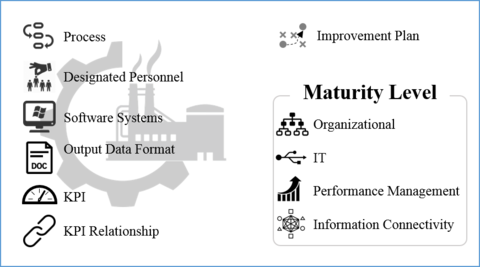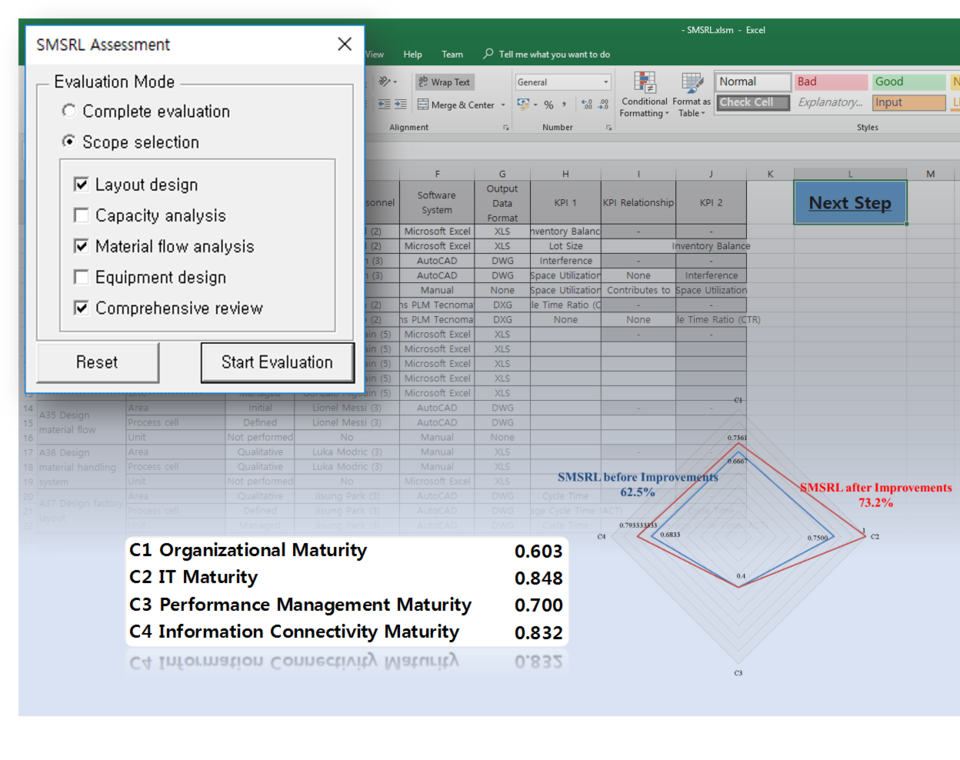Smart Manufacturing Systems Readiness Level (SMSRL) Tool

Smart Manufacturing System Readiness
The Smart Manufacturing Systems Readiness Level (SMSRL) focuses on evaluating the readiness (also can be viewed as maturity) for a factory to undergo improvements, particularly related to the data intensive smart manufacturing technology deployment in a factory. The SMSRL uses the Factory Design and Improvement (FDI) activity model as a guide for indicating actions and things that should be in place for performing a successful smart factory transformation at the operational level (i.e., it does not cover the necessary underlying communication infrastructure). In the SMSRL, activities employed from the FDI are subdivided into their applicability at the various control levels of ISA-88: Enterprise, Site, Area, Process Cell, Unit, Equipment Module, and Control Module. Each activity is measured under multiple dimensions such as Activity Management, Designated Personnel, Software System, Output Data Format, KPIs and KPI relationship, all of which are grouped into 4 measurement categories (C1: Organizational Maturity, C2: IT Applications Maturity, C3: Performance Management Maturity and C4: Information Connectivity Maturity). Each of the measurement categories has its own calculation method to quantify the maturity level; and it is used for deriving customized factory improvement plans.
The tool walks the user through the necessary assessment steps. This makes it easy for the user to obtain the readiness for the smart factory transformation. The tool provides 2 different modes, a complete assessment and a scope selection mode. While it is slightly time-consuming, users can have a thorough investigation on their current practices in the complete assessment mode. On the other hand, the scope selection mode provides a use-case-driven assessment including 1) Layout Design, 2) Capacity Analysis, 3) Material Flow Analysis, 4) Equipment Design and 5) Comprehensive Review. Each use case selects a subset of activities and hence enables a quick assessment for the maturity to achieve the digital and data-intensive analysis for the target objective. After filling the sheets created automatically according to users’ selection, the tool computes readiness level of current state.
The SMSRL provides a broader evaluation than the MESA MOM/CMM. While the MESA MOM/CMM ensures that there are established principles and guidelines to manage (e.g., exception handling), monitor and continuously improve manufacturing operations within a factory, the SMRL provides more detailed assessment particularly on the improving part. The SMSRL additionally take into account the use of software tools and their ability to interconnect, which is essential to the smart factory transformation. As for any organizational transformation, it is better to know how the organization is going about its business first. For that reason, it is likely better for a factory to achieve at least level 3 or 4 of the MOM/CMM assessment before considering the smart factory transformation and using the SMSRL.
Related Publications
Sample Screenshots

Screen capture of the SMSRL assessment tool.

